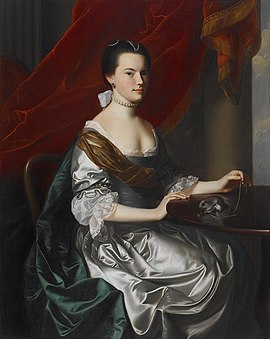
John Singleton Copley was an Anglo-American painter, active in both colonial America and England. He was probably born in Boston, Province of Massachusetts Bay, to Richard and Mary Singleton Copley, both Anglo-Irish. After becoming well-established as a portrait painter of the wealthy in colonial New England, he moved to London in 1774, never returning to America. In London, he met considerable success as a portraitist for the next two decades, and also painted a number of large history paintings, which were innovative in their readiness to depict modern subjects and modern dress. His later years were less successful, and he died heavily in debt. He was father of John Copley, 1st Baron Lyndhurst.

Gilbert Stuart was an American painter from Rhode Island Colony who is widely considered one of America's foremost portraitists. His best-known work is an unfinished portrait of George Washington, begun in 1796, which is usually referred to as the Athenaeum portrait. Stuart retained the original and used it to paint scores of copies that were commissioned by patrons in America and abroad. The image of George Washington featured in the painting has appeared on the United States one-dollar bill for more than a century and on various postage stamps of the 19th century and early 20th century.

Howard Chandler Christy was an American artist and illustrator. Famous for the "Christy Girl" – a colorful and illustrious successor to the "Gibson Girl" – Christy is also widely known for his iconic WWI military recruitment and Liberty loan posters, along with his 1940 masterpiece titled, Scene at the Signing of the Constitution of the United States, which is installed along the east stairwell of the United States Capitol.

Joseph Blackburn, also known as Jonathan Blackburn, was an English portrait painter who worked mainly in Bermuda and in colonial America. His notable works include portraits of Hugh Jones and Colonel Theodore Atkinson.
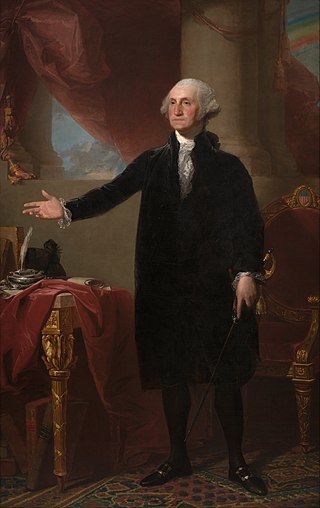
The Lansdowne portrait is an iconic life-size portrait of George Washington painted by Gilbert Stuart in 1796. It depicts the 64-year-old president of the United States during his final year in office. The portrait was a gift to former British Prime Minister William Petty, 1st Marquess of Lansdowne, and spent more than 170 years in England.

Robert Feke was an American portrait painter born in Oyster Bay, New York. According to art historian Richard Saunders, "Feke’s impact on the development of Colonial painting was substantial, and his pictures set a new standard by which the work of the next generation of aspiring Colonial artists was judged." In total, about 60 paintings by Feke survive, twelve of which are signed and dated.
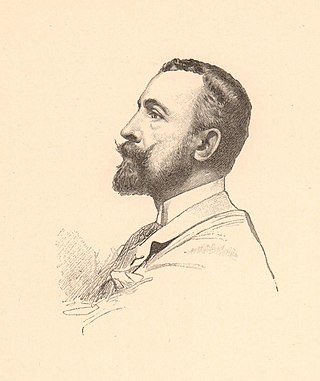
Théobald Chartran was a classical French academic painter and portrait artist.

Henry Inman was an American portrait, genre, and landscape painter.

Peter Pelham was an American portrait painter and engraver, born in England.
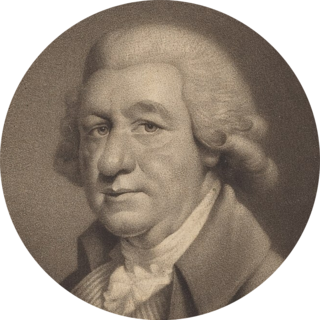
John Greenwood Sr. (1727–1792) was an early American portrait painter, engraver and auctioneer.
Joseph Badger was a portrait artist in Boston, Massachusetts, in the 18th century. He was born in Charlestown, Massachusetts, to tailor Stephen Badger and Mercy Kettell. He "began his career as a house-painter and glazier, and ... throughout his life continued this work, besides painting signs, hatchments and other heraldic devices, in order to eke out a livelihood when orders for portraits slackened." In 1731 he married Katharine Felch; they moved to Boston around 1733. He was a member of the Brattle Street Church. He died in Boston on May 11, 1765, when "on Saturday last one Mr. Badger, of this Town, Painter, was taken with an Apoplectic Fit as he was walking in his Garden, and expired in a few Minutes after." Works by Badger are in the collections of the Worcester Art Museum, the Museum of Fine Arts Boston, and Historic New England's Phillips House, Salem, Mass. While respected in his own time, subsequent scholars and connoisseurs largely overlooked Badger's significance until Lawrence Park wrote a book about him in 1918.

Matthew Pratt was an American "Colonial Era" artist famous for his portraits of American men and women. He was born in Philadelphia, Province of Pennsylvania to goldsmith Henry Pratt, (1708–1748) and Rebecca Claypoole, (1711–1762), he was the second of eight children born to the Pratts.
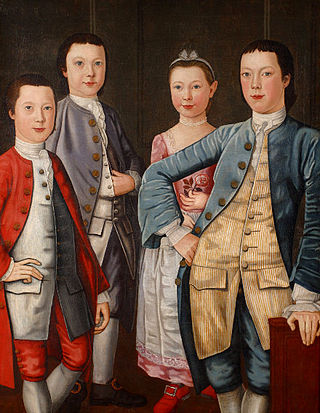
John Durand was a colonial American portraitist. With John Mare, Abraham Delanoy, and Lawrence Kilburn, he was one of a number of portraitists living and working in New York City during the 1760s.
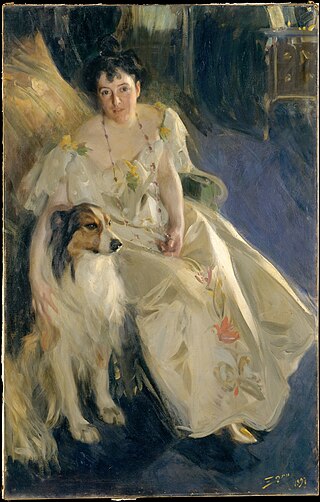
Virginia Purdy Bacon was an American heiress and art dealer.

Katharine Greene Amory was an 18th-century Bostonian known for the journal she kept during the American Revolution. It is valued by historians for its record of daily life and for its window onto the viewpoint of a Loyalist woman.

Valley of the Yosemite is a painting by the German American painter Albert Bierstadt that was completed in 1864. Initially associated with the Hudson River School, Bierstadt rose to prominence for his paintings of the Rocky Mountains, which established him as one of the best painters of the western American landscape. His later paintings of Yosemite were also received with critical acclaim and public praise.
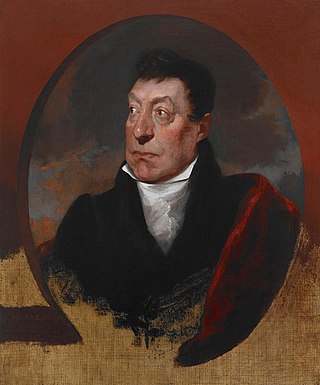
Marquis de Lafayette was painted in 1825 by Samuel Morse. Mostly known for his creation of the electric telegraph, Morse was also an artist. Morse was a Professor of Painting and Sculpture at the University of the City of New York.

A Boy with a Flying Squirrel (Henry Pelham), or Henry Pelham (Boy with a Squirrel), is a 1765 painting by the American-born painter John Singleton Copley. It depicts Copley's teenaged half-brother Henry Pelham with a pet flying squirrel, a creature commonly found in colonial American portraits as a symbol of the sitter's refinement. Painted while Copley was a Boston-based portraitist aspiring to be recognized by his European contemporaries, the work was brought to London for a 1766 exhibition. There, it was met with overall praise from artists like Joshua Reynolds, who nonetheless criticized Copley's minuteness. Later historians and critics assessed the painting as a pivotal work in both Copley's career and the history of American art. The work was featured in exhibitions at the Museum of Fine Arts, Boston, and the National Gallery of Art. As of 2023, it is held by the former.

Rebecca Pritchard Mills and Her Daughter Eliza Shrewsbury is an oil-on-canvas portrait created by American painter James Earl. It was painted in Charleston, South Carolina, in 1794. A bequest of Henry Francis du Pont, the painting is held in the permanent collection of the Winterthur Museum, Garden and Library.
Herminia Borchard Dassel, also known as Hermine Dassel, was a German-American painter, notable for her portraits and genre paintings.
